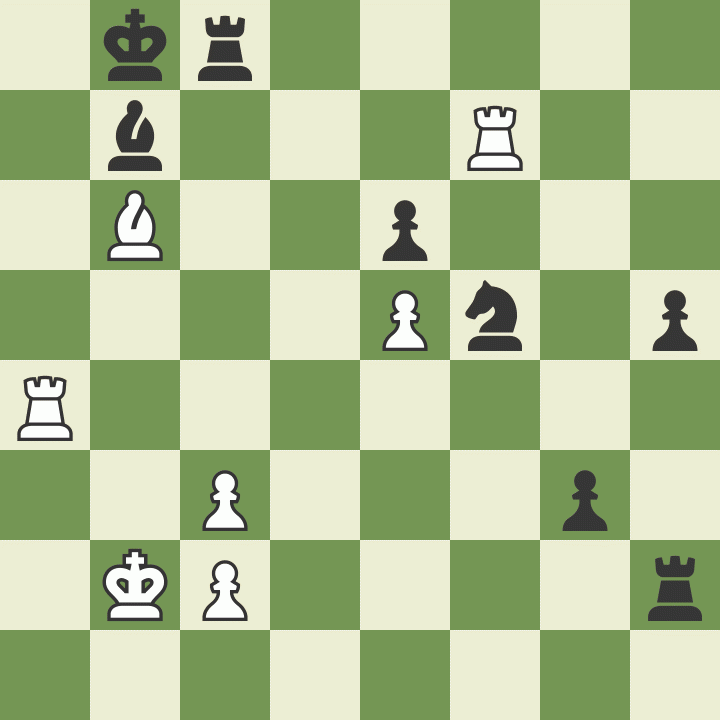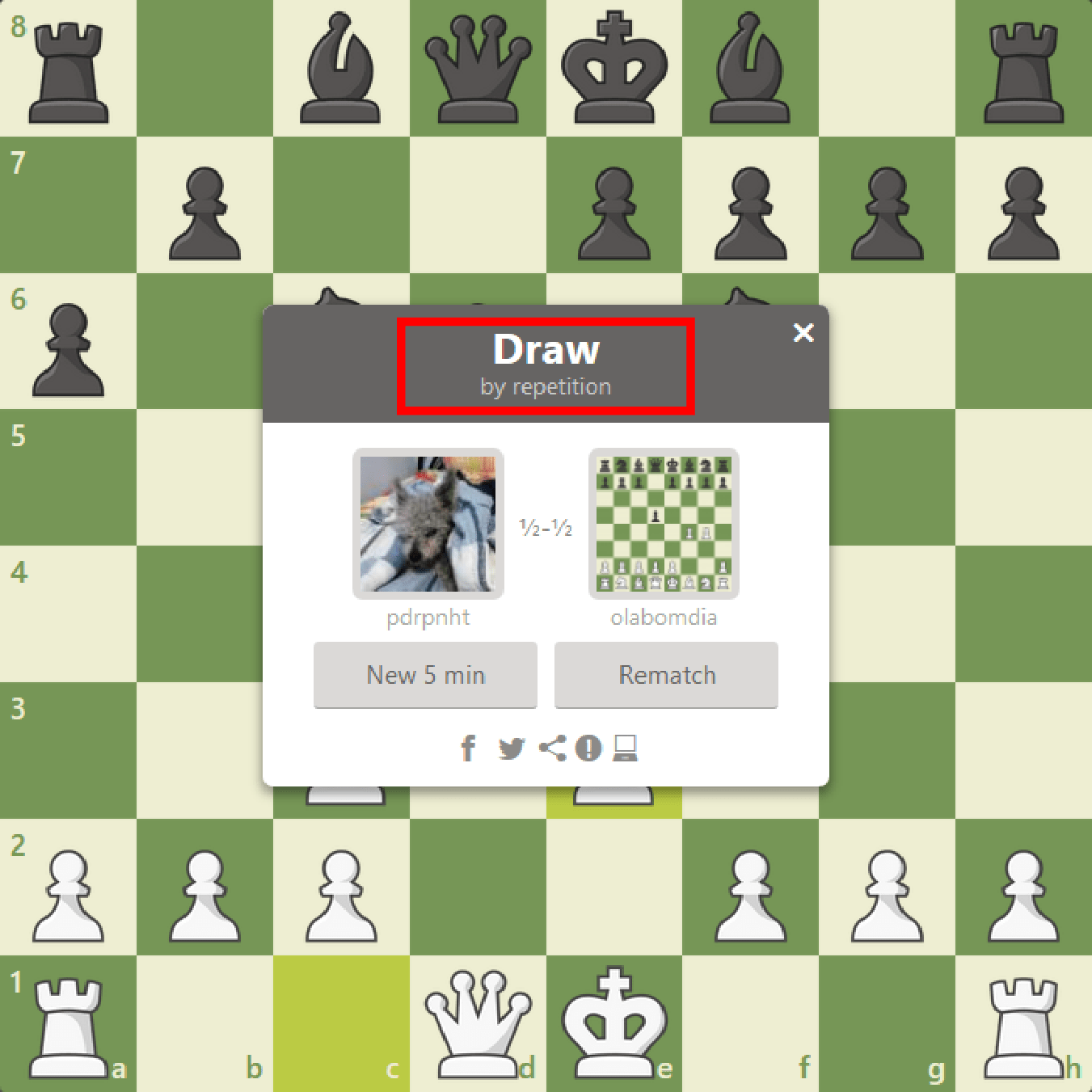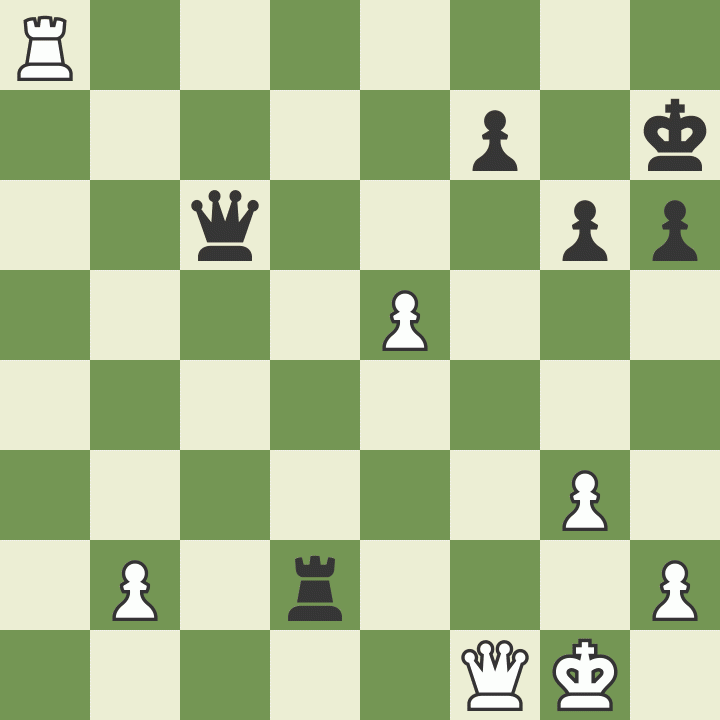
Threefold Repetition
What if there is a way to avoid a loss when you are playing in a bad position? In these situations, the threefold repetition rule can help you escape defeat.
Here is what you need to know about the threefold repetition.
- What Is The Threefold Repetition In Chess?
- Why Is The Threefold Repetition Rule Important?
- Test Your Skills
- Conclusion
What Is The Threefold Repetition In Chess?
The threefold repetition rule states that if a game reaches the same position three times, a draw can be claimed. A position is repeated if all pieces of the same kind and color are on identical squares, and all possible moves are the same.

When playing over the board, the player who has the move is the only one who can claim a draw. If the third repetition appears on the board and the player wants to call the draw, they can do so before moving. If the player who wants to draw is about to move into a repeated position, they have to state their intention before hitting the clock.
Fortunately, if you are playing on Chess.com, you do not have to worry about making a claim. Threefold repetition draws happen automatically after the third repetition occurs.
 On Chess.com, a draw is automatically registered after a threefold repetition.
On Chess.com, a draw is automatically registered after a threefold repetition.
Why Is The Threefold Repetition Rule Important?
The threefold repetition is a fundamental rule for chess players to know because it can save them from losing a game, even when they are in a bad position. Conversely, those who are winning must avoid this situation. Players can achieve a forced draw by employing a perpetual check and forcing their opponent to keep repeating the same moves.
In this game played between GM Anish Giri and GM Magnus Carlsen during the 2013 Tata Steel Chess Tournament, Carlsen found himself in a worse position. He managed to salvage the game by playing a combination that forced Giri into a draw by repetition.
Another example of this drawing tactic happened in this wild game between GM Igor Zaitsev and GM Anatoly Karpov. If Zaitsev had decided to keep playing instead of putting Karpov in a perpetual check, he would have ended in a terrible position.
As you can see from the examples above, you must always be alert for possible drawing combinations using the threefold repetition rule. Avoid them when you are winning, and try to apply them when you are losing.
Test Your Skills
Now that you know about the threefold repetition rule, it is time for you to test your skills. Solve the puzzles below with your newly acquired knowledge about this drawing rule.
Puzzle 1: You are down in material and about to be checkmated by your opponent. Is there anything you can do to prevent your defeat?
Puzzle 2: The position below is from a game played between GM Viktor Korchnoi and GM Anatoly Karpov during the 1981 World Championship match. Korchnoi had just moved his queen to f1 and left his rook on a8 hanging. Imagine you were in Karpov's shoe playing as Black. Should you capture the rook?

No, you should not! Capturing the rook would be a big mistake and would allow Korchnoi to draw the game using the threefold repetition rule. Here is what would have happened if Karpov had captured the rook and tried to escape the draw.

Conclusion
You now know what the threefold repetition rule is and why it is useful during a game of chess. Head over to our Lessons page and learn other ways of defending yourself in a bad position.







